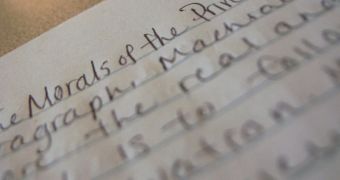A group of experts at ETH Zürich, in Switzerland, has recently taken an active interest in understanding how morality and moral behavior occur in relationships and interactions between neighbors. In order to do this, the team applied concepts pertaining to game theory. The conclusions are not exactly intuitive, ETH team leader Dirk Helbing says. It would appear that moral behavior is not a consequence of the interactions an individual has with society as a whole, but rather a result of the relationships a person develops with those closest to him or her, PhysOrg reports.
In order to conduct the new study, the researchers developed a computer model, in which they simulated the most common moral behaviors of people via data points. Each of the thousands of points meant to simulate larger social networks had four action possibilities, each of them in tune with the different types of behavior identified in real life. The four main categories were those who cooperated with the system, those that enforced and punished people that did not cooperate, free riders (people who ignored the common good), and free riders that punished other free riders (immoral free riders).
In the computer simulation, each of the points representing humans was given the possibility to select between the action patterns associated with the four behavioral types – cooperate, cooperate and enforce through punishment, free ride, or free ride and punish. The computer then used a complex algorithm to model possible interactions of these behaviors in larger groups. The calculation patterns relied heavily on concepts derived from game theory. Details on the algorithms themselves appear in the latest issue of the esteemed scientific journal Physics World.
The computer distributed the behaviors randomly to the data points it was modeling, and then ran a simulation to learn which of them triumphed in the long run. The behavior of each individual was naturally modeled in response to the behaviors exhibited by those closest to it. The main factors that influenced the outcome were the fines for free riders, the costs of punishing others, and the synergy factor. It was mainly found that everyone tended to become a free rider in the end, but the team also discovered that clusters of moral behavior and cooperation formed among individuals that were closest to each other. If one exhibits moral behavior, then the others are stimulated to show the same type of behavior.

 14 DAY TRIAL //
14 DAY TRIAL //